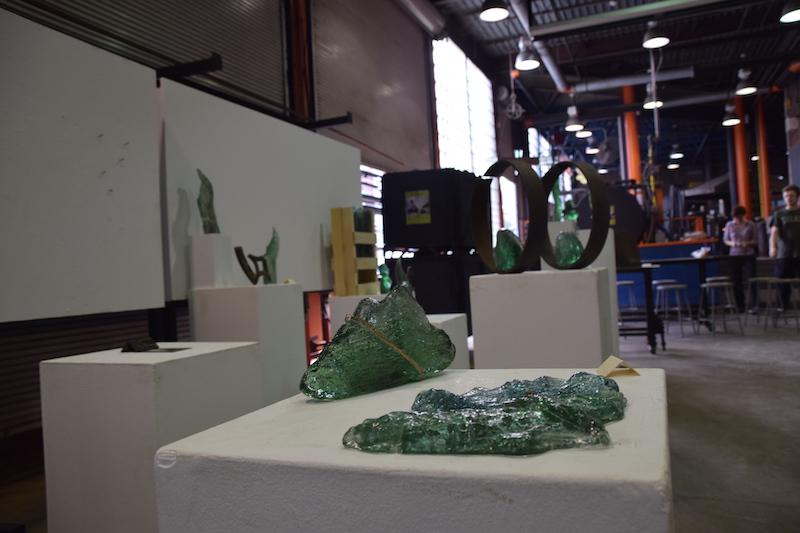Glass arts program celebrates four decades of growth
For more than 40 years, Tulane has offered students the opportunity to explore glass as a sculptural medium. Professor Gene Koss took charge of the program in 1977 and has seen it grow from only eight students to more than 70.
Students serious about glass can make it their concentration for a Bachelor of Arts, Bachelor of Fine Arts or Masters of Fine Arts degree. Koss also encourages non-arts majors interested in the medium to sign up for a course. Koss, Professor Christian Stock and graduate students in the M.F.A program teach all of the glass classes.
Glass is one of six areas that studio art majors can pursue, along with ceramics, digital arts, painting and drawing, photography, printmaking and sculpture. Foundational, intermediate and advanced classes in glass are offered.
Glass classes teach technical skills like blowing, casting, molding, shaping glass, and conceptual skills necessary for sculpture design. Artists use a variety of tools to manipulate glass, which must be heated to molten temperatures to be shaped. Classes in glass work take place in the Margaret Pace-Wilson Studio, which contains furnaces, kilns and numerous other equipment necessary for making glass sculptures.
Tulane’s glass program is unique in that it emphasizes using glass as a sculptural element to create artwork as opposed to craftwork.
“If you come and study [glass] at Tulane, it’s going to be sculpture that’s idea-based,” Koss said. “We want the work to be elevated enough that it can fit into the fine art world.”
This emphasis on sculpture encourages students to create mixed media pieces. Students have access to the woodshop, metal shop and sculpture foundry in addition to the glass studio.
Senior Ethan Champagne, currently enrolled in Intermediate Glass, said the program has taught him a variety of technical skills.
“We have some new laser cutters and new computer software to help us with design and fabrication, but the thing that [Koss] finds and that we find enjoyable is having something to do with our hands,” Champagne said.
Champagne said he enjoys the program because of the uniqueness of the curricula, the high-quality facilities and the opportunity to interact with the art community in the city.
Tulane’s fine arts department produces skilled artists who add to the existing glass community in New Orleans while current students benefit from attending open galleries and gaining inspiration from the city.
Champagne said Tulane’s glass program not only enriches students but also the New Orleans glass community.
“The focus of our first project [was] having New Orleans-inspired pieces … ,” Champagne said. “You have access to the city and lots of things to inspire you, and there’s lots of glass in New Orleans.”
Your donation will support the student journalists of Tulane University. Your contribution will allow us to purchase equipment and cover our annual website hosting costs.




Leave a Comment